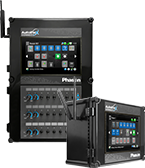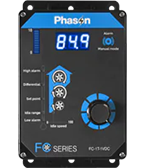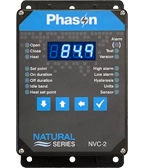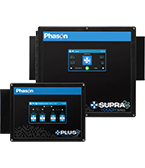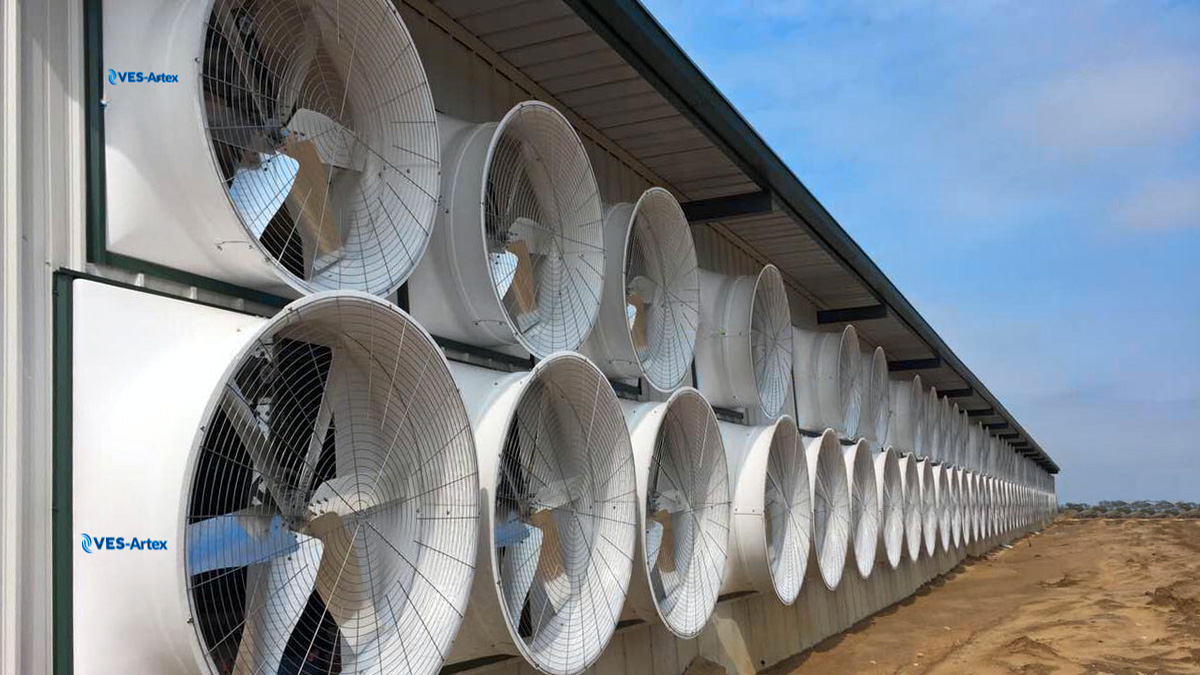
Ventilation is critical to the health and production of animals in modern farming operations. Livestock producers are continuously looking for efficient and cost-effective ways to keep their barns in optimal environmental condition. In this article we are going to look at cross ventilation, also called cross tunnel ventilation.
Introduction to cross ventilation
Cross ventilation barns offer flexible build and design options, allowing them to be oriented according to prevailing winds and customized based on the operator’s preference. Fans exhaust stale air out, which brings fresh air in through the inlets or curtains. The intake and movement of fresh air promotes a healthy environment for the animals and employees. Cross ventilation is particularly designed to alleviate heat stress during hot weather situations.
In a facility with cross ventilation, airflow is perpendicular to the feed lane and parallel to the stalls, resulting in greater airflow through the stalls. Let’s look at how it works and the benefits of cross ventilation for livestock barns.
How cross ventilation works
Cross ventilation works by harnessing the movement of air to generate a consistent flow throughout the structure. As air flows through the barn, heat, humidity, and airborne contaminants are removed, creating a more comfortable and healthier environment for the animals.
Fans are positioned on one sidewall, while inlets are located on the opposite sidewall. The proximity between the inlets and fans allows the movement of air at a low speed. This layout provides effective air exchange and accommodates both modest and large volumes of air.
It is not required or ideal to have all fans operating during cooler weather, but it is still necessary to have some fans running to provide minimum ventilation and prevent the accumulation of toxic gasses and contaminants.
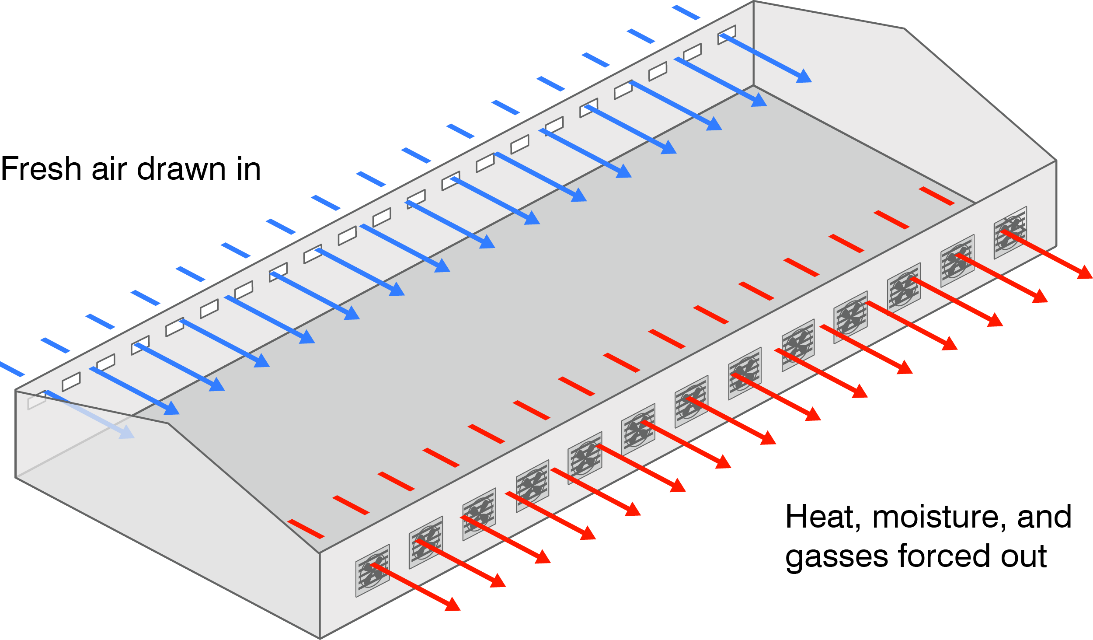
Uses
| Industry | Applications | Suitability for use |
|---|---|---|
| Dairy | All | Common |
| Poultry | Broiler chicken, layers, turkey grower | Sometimes |
| Swine | Nursery and finisher | Rarely |
Advantages
- The initial investment required for the system is less than other mechanical ventilation systems.
- Cross ventilation systems effectively maintain temperature and remove toxic gasses, which is critical for animal well-being and productivity.
- Cross ventilation barns alleviate heat stress better than naturally-ventilated barns. This is especially true in barns that use cooling pads.
- Using cooling pads eliminates the need for sprinklers, therefore reducing the amount of water that ends up on the floor and in the wastewater system.
- Studies show that in dairy barns, respiratory illnesses such as pneumonia are about half those of naturally ventilated barns.
- Because of the advantages above, production and conception rates are almost always higher in cross ventilation barns.
Considerations
- If used, cooling pads require weekly and monthly maintenance that includes draining the waterlines and washing the pads.
- Cooling is less effective at high humidity because the cooling pads cannot add water to already saturated air.
Conclusion
The advantages of cross-ventilation systems include effective temperature control, reduced heat stress and respiratory illnesses, and enhanced production and conception rates. While the system requires regular maintenance and may face challenges in high humidity if cooling pads are used, its comprehensive benefits make cross ventilation an excellent choice for livestock producers seeking an optimal balance between cost, environmental considerations, and the well-being of their animals.
Phason’s AutoFlex Connect is an excellent choice for controlling dual ventilation systems. It can control variable and fixed-stage fans, inlets and vents, curtain machines, and much more.


